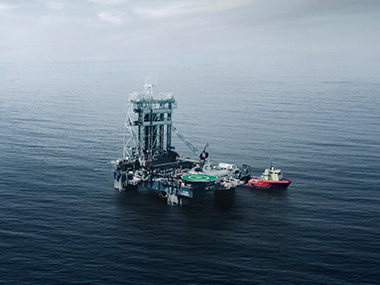Oil market – Oversupply vs sanctions
Over the last week, the oil market has once again been caught in a limbo between more warnings of an incoming “oil glut” and potential sanctions. Both formal sanctions, such as the US OFAC sanctions on Lukoil and Rosneft, which will take effect on November 21, and hard sanctions carried out by Ukraine, are having an impact.
Geopolitical premium on the rise
Last week, Ukraine successfully targeted the key Russian oil export port of Novorossiysk in the Black Sea. A fuel depot, a container terminal, and a vessel were reportedly struck.
It remains unclear how extensive the damage is, but it seems oil loading has resumed. However, Russian air defense was destroyed, and new Ukrainian attacks are likely. The port accounts for roughly one-quarter of Russia’s seaborne crude exports.
If exports are disrupted again, it will be a severe blow to Russia’s oil shipments, underscoring that Ukraine’s “sanctions” are far more effective than formal sanctions. The market will therefore follow developments closely in the coming days.
The market also has great respect for the US OFAC sanctions on Lukoil and Rosneft, which officially will enter into force on 21 November.
Russia, of course, is at the top of the geopolitical agenda. But we also have increased tensions between the US and Venezuela. The world's largest aircraft carrier, the USS Gerald R. Ford, has arrived in the region. There have been various media reports suggesting that the US may conduct military operations in the area. Iran has apparently seized an oil tanker in the Gulf of Oman, diverting it towards its territorial waters after it passed the Strait of Hormuz. To add to the geopolitical premium, Azerbaijan has issued a strong protest after a Russian Iskander missile fell onto the Azeri embassy in Kyiv under a Russian drone and missile barrage on the Ukrainian capital.
Oil glut fears keep oil prices stable
However, the market has not rallied significantly on the geopolitical news. The “oil glut” fears got a new boost during last week. The three major oil agencies, IEA, EIA, and OPEC, all published new oil market reports with updated forecasts.
The IEA warned of a 4 million barrels per day (mb/d) surplus next year.
OPEC has so far been very optimistic in its assessment of the market balance, which has been one of the reasons the cartel has increased production and announced higher output in 2026. But the new report painted a different picture. A stock draw had previously been expected in the third quarter of 2025, but this has now shifted to a stock build. For 2026, the cartel now expects a so-called call on OPEC+ of 43 mb/d, which represents the amount of oil that OPEC+ must supply to maintain market balance. The level is marginally below today’s OPEC+ production. In other words, there is no room to phase more OPEC+ barrels into the market without triggering a stock build. With an expected demand growth of 1.4 mb/d, OPEC remains optimistic for 2026.
The oil market report from the US Department of Energy's EIA also indicated an oversupply of approximately 2.2 million barrels per day in 2026. However, EIA raised its Brent forecast for 2026 from USD 53 to USD 55. EIA highlights two factors supporting oil prices: first, sanctions on Russia, and second, China’s stock build, which is viewed as strategic and therefore counted as real demand.
The IEA also highlighted the sanctions on Russia as a significant risk factor for supply in 2026.
Finally, the revision to the OPEC forecasts underscores that OPEC economists have now caught up with reality, and in this way supports our view that the cartel will not add more oil in 2026 and has returned to a “price strategy” from a “market share strategy.” In fact, it is our view that OPEC+, spearheaded by Saudi Arabia, is more likely to cut quotas in 2026 than expand them. In a way, the report and the decision to halt quota increases in Q1 2026 underscored that OPEC responds when Brent approaches USD 60.








